process and concurrency
https://cloud.tencent.com/developer/article/1710837
Linux进程上下文切换过程context_switch详解–Linux进程的管理与调度(二十一)
进程用户态 上下文切换需要保存哪些_Linux内核浅析-进程调度时机和过程
What is Context Switching in Operating System?
x86 Handling Exceptions INTERRUPTS
进程切换:自愿(VOLUNTARY)与强制(INVOLUNTARY)
Concurrency Models](http://tutorials.jenkov.com/java-concurrency/concurrency-models.html)
Thread Safety and Immutability
1. process
structure
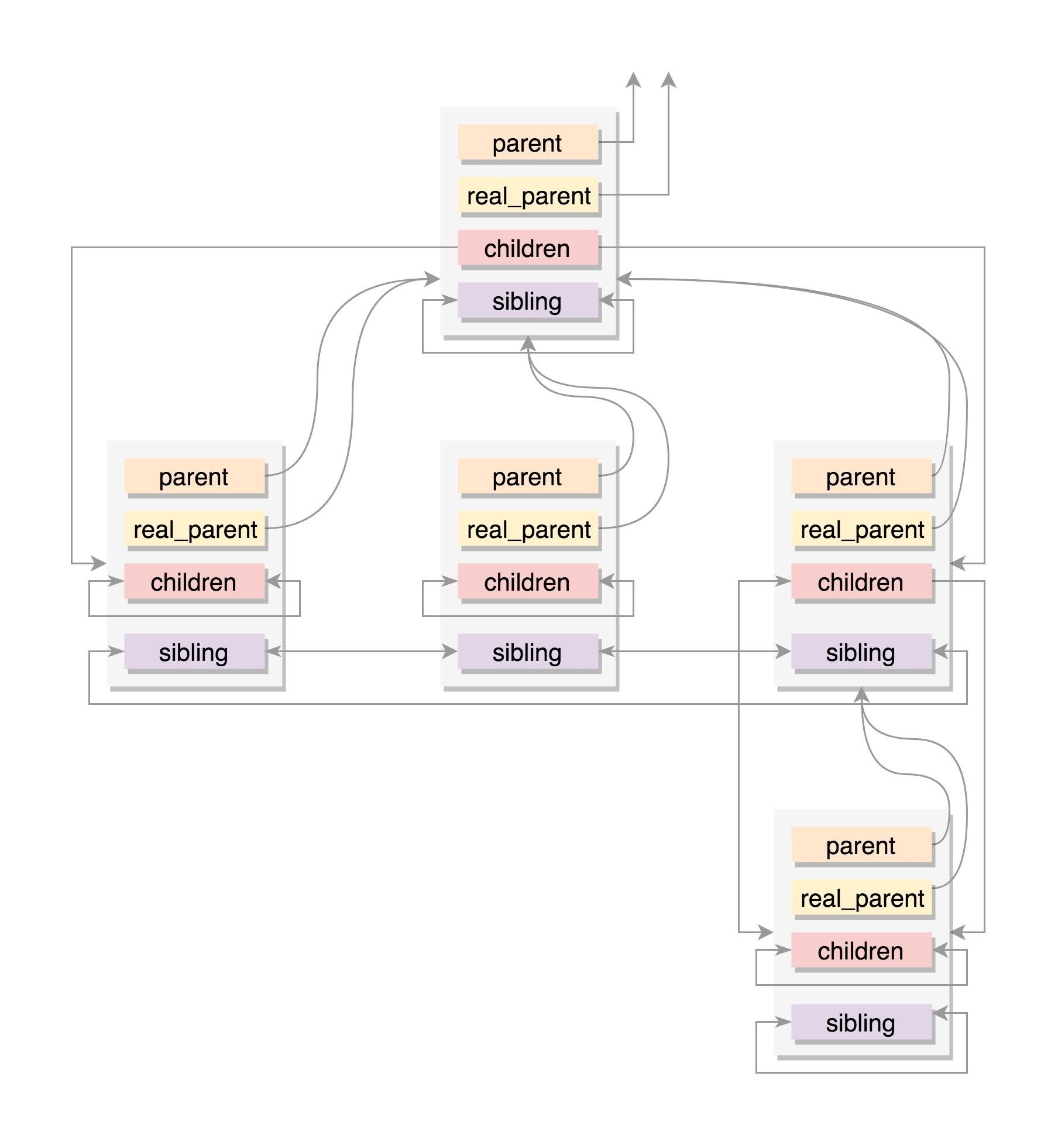 对要执行任务的一种抽象;包含一系列相关状态;
对要执行任务的一种抽象;包含一系列相关状态;
|
|
creat thread
|
|
id
- pid: process id; 每个task都会有
- tgid: task groud id;线程组id;
- groud leader: 主task(主线程);
初始: [pid 1 tgid 1 groupLeaderID 1] 创建子线程: [pid 2 tgid 1 groupLeaderID 1]
2. process vs thread
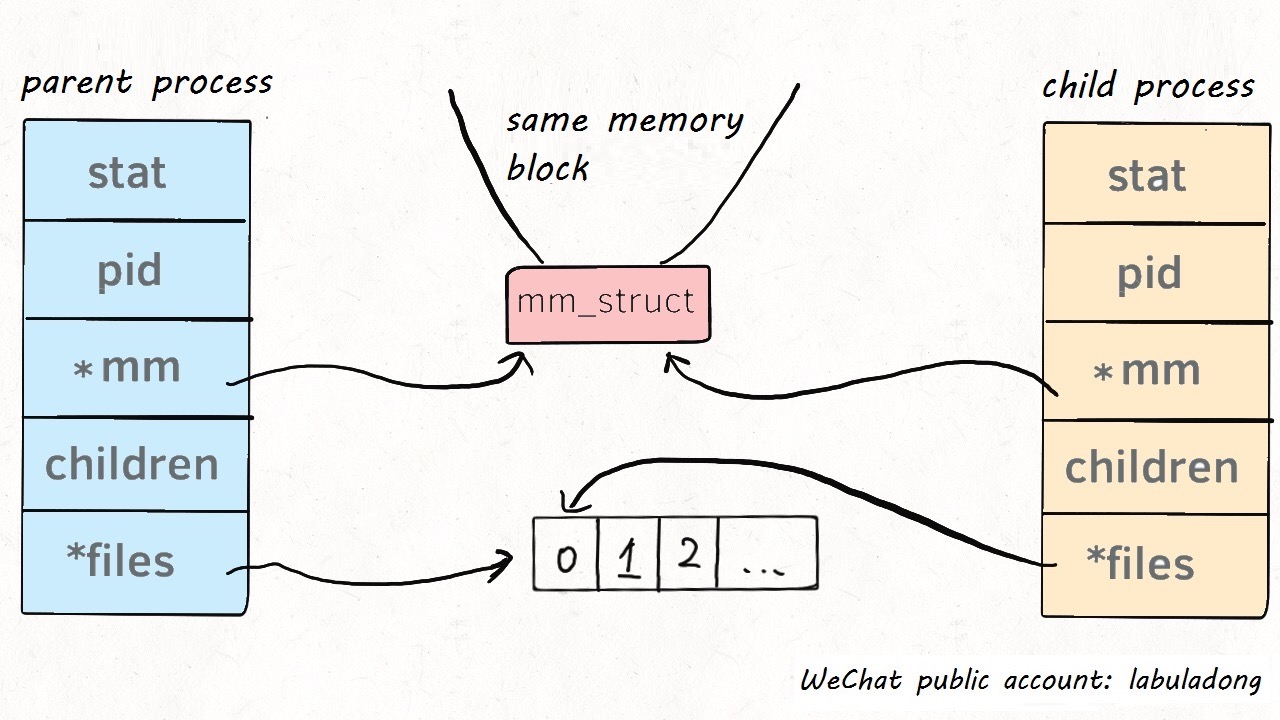
- 同: 都是同一种数据结构task表示, 对于内核调度来说没区别;
userView: process 1 thread 2
[process pid 1 tgid 1] [thread pid 2 tgid 1]
kernelView: process1 process2
- 不同: Thread共享: openfile,vm; process没有共享的;
kernel space vs user space;
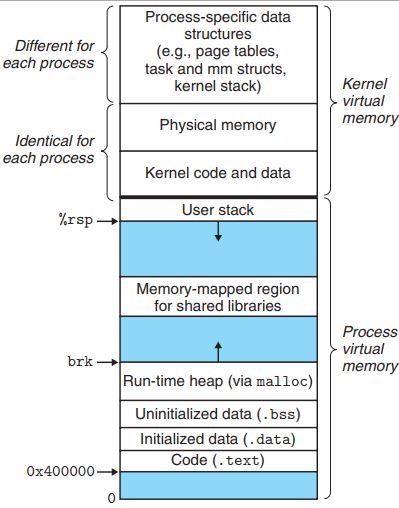
不同的内存区域,每个区域包含 memory(stack,heap) + instruction
user space:
- 运行普通指令
- user stack, user heap
kernel space:
- 允许较高级的指令: i/o, 进程管理
- kernel stack , kernel heap
|
|
process可以在用户态和内核两种状态下来回切换;
- 用户空间: 存储 堆;栈;数据; 指令: 用户代码; device access: no
- 内核空间;
存储: 内核栈(私有); 内核堆(所有人共有的);
指令: 内核代码;
device access: yes;
4. process state
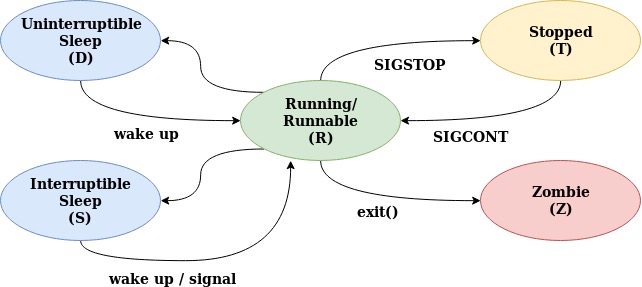
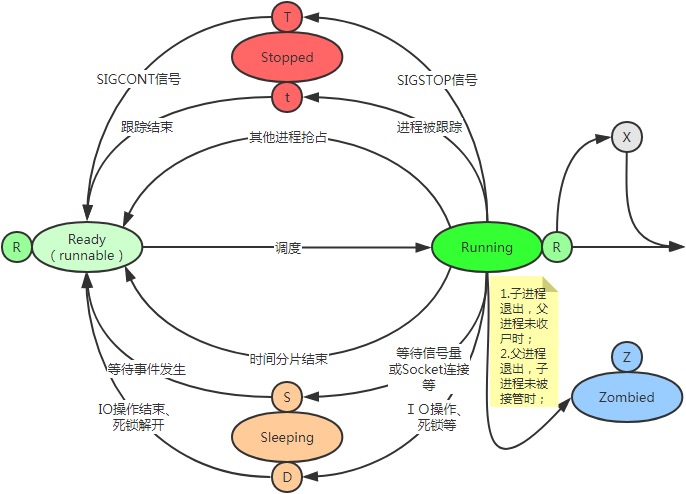
- runable: 就绪,等待调度;
- waiting(sleeping): i/o;锁(内存同步访问)
- running: 执行中;
context switch
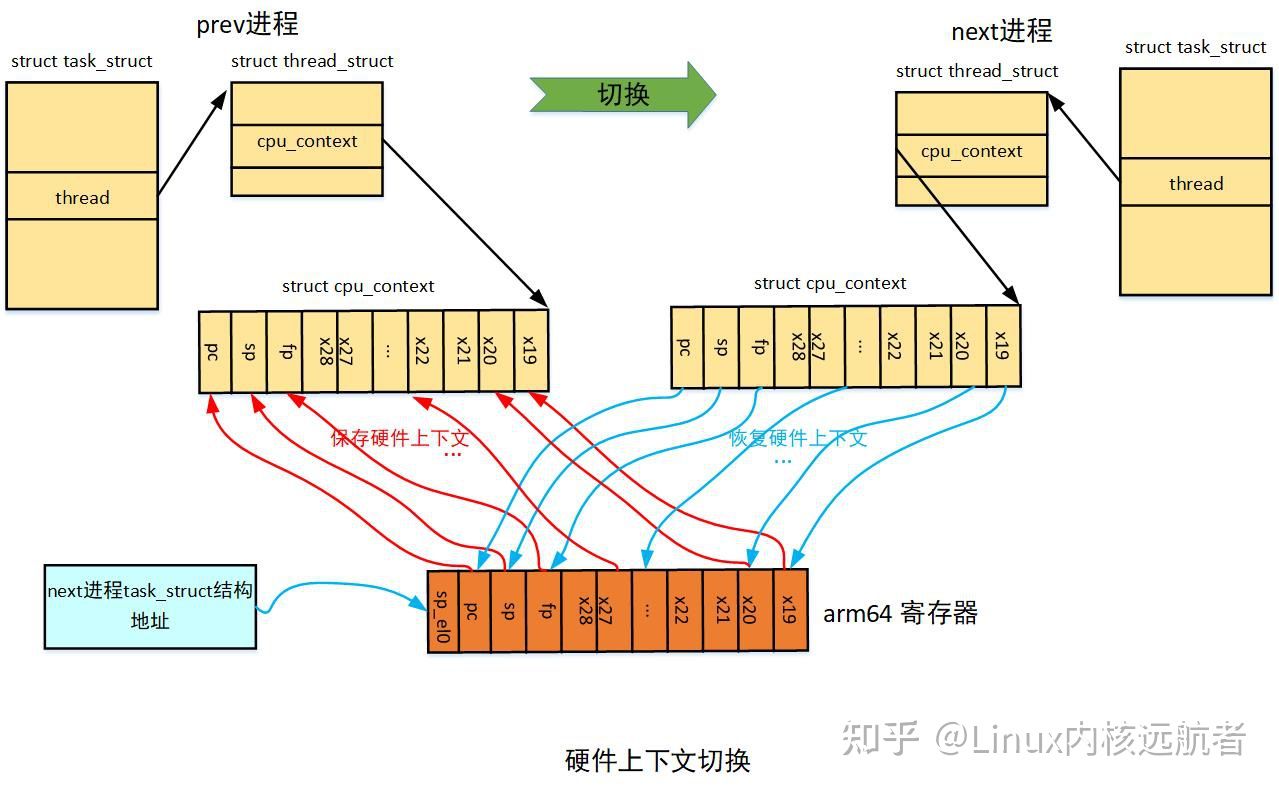
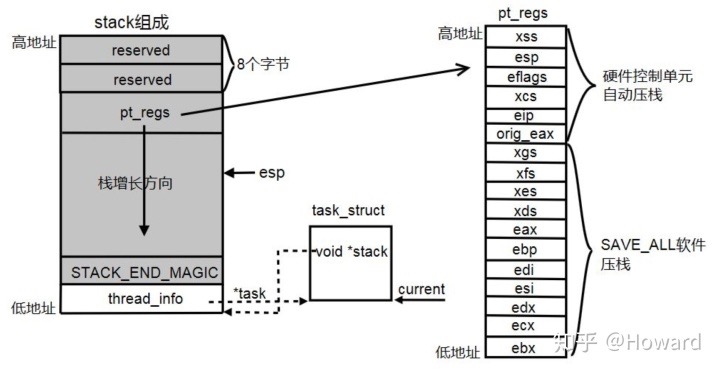
1. what’s context?
-
what? task state; a set of variable store In register;
-
cause:
- interrupt;
2. types;
-
stack: esp,ebp register;
- esp: stack pointer
- ebp: base pointer
-
cpu register
-
heap;;
- 页表基址(pageTable 地址)register;
- 刷新tlb(页表缓存);
->context_switch ->switch_mm_irqs_off //进程地址空间切换 ->switch_to //处理器状态切换
2. 如何触发?
- overview
- 系统调用(system call):同一process内
- 进程切换(schedule):不同process
- 中断:
1. system call
-
进入内核态
- 保存用户态register
- program counter 更新为内核态指令;
-
退出内核态
- 恢复用户态register
3. interrupt and exception
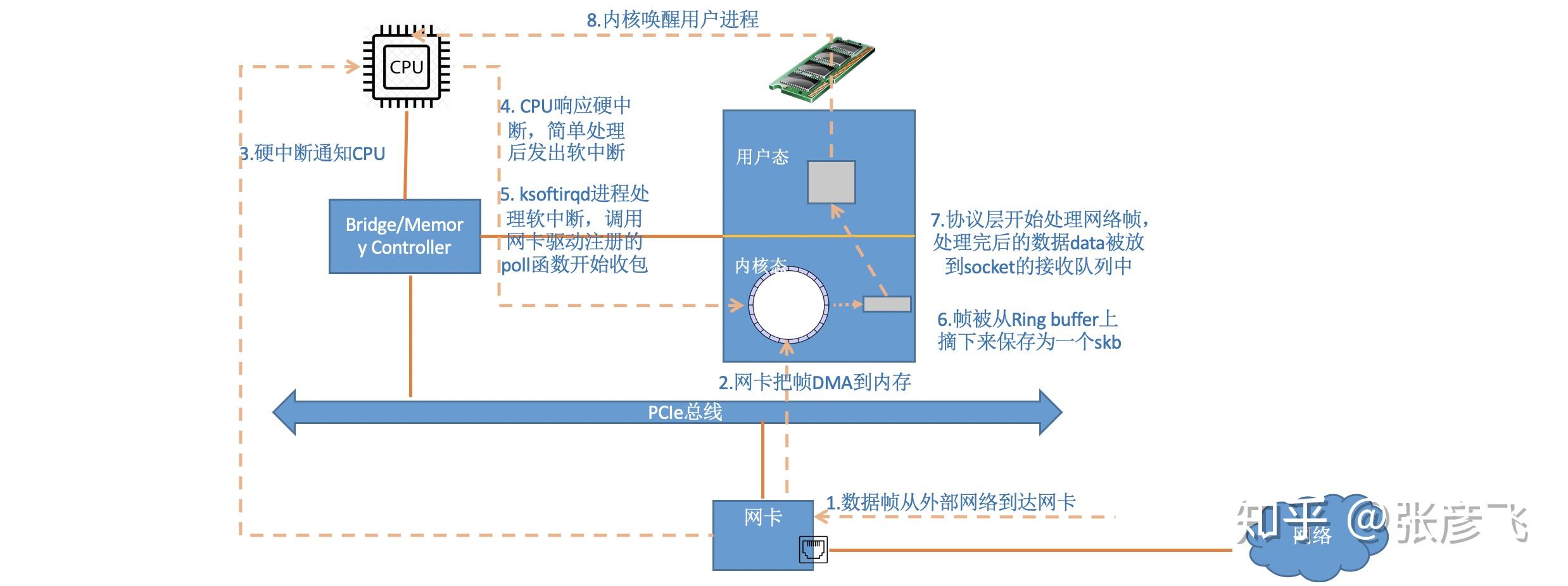
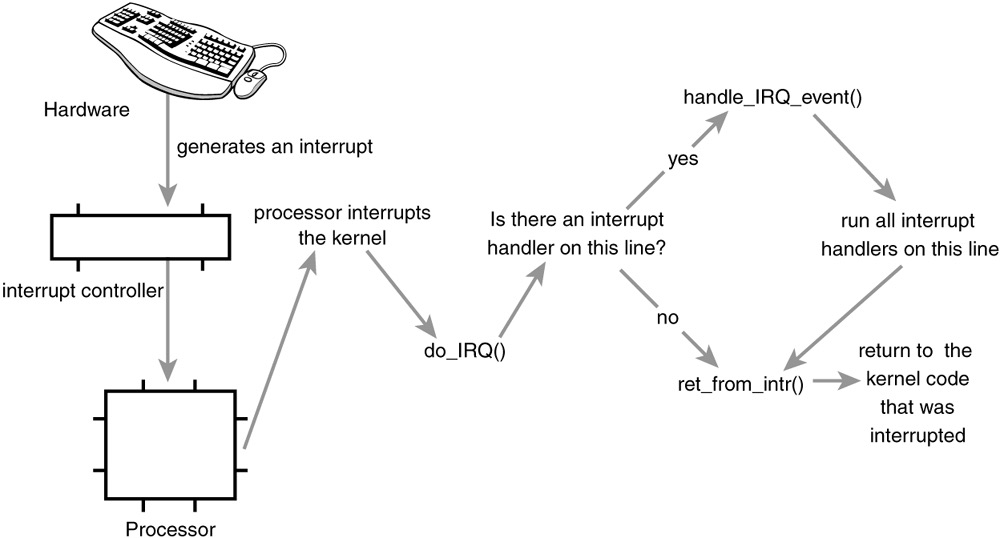
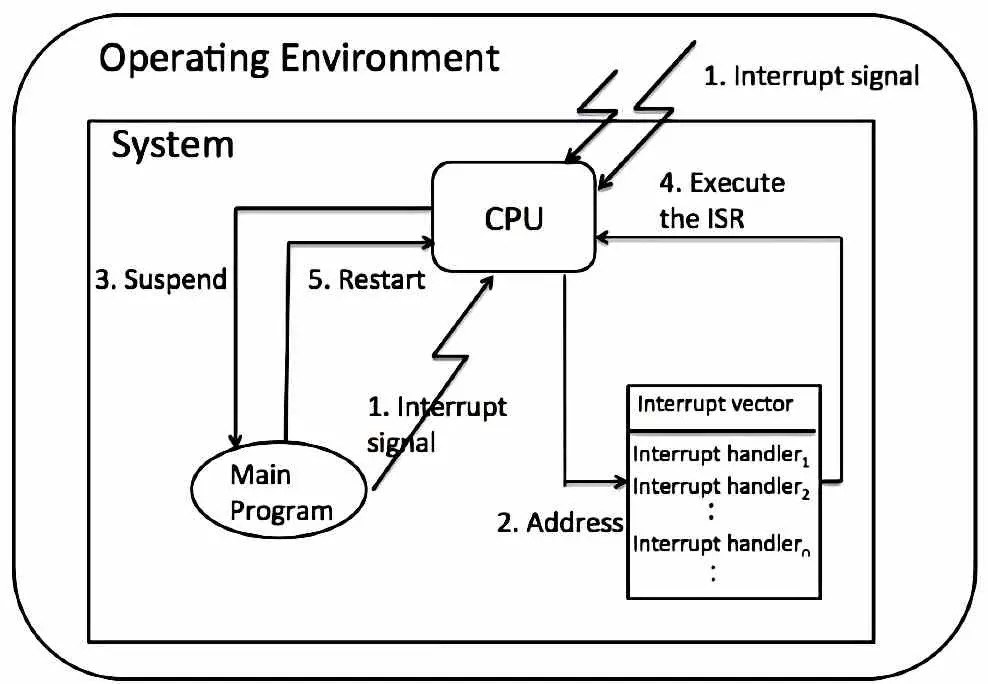
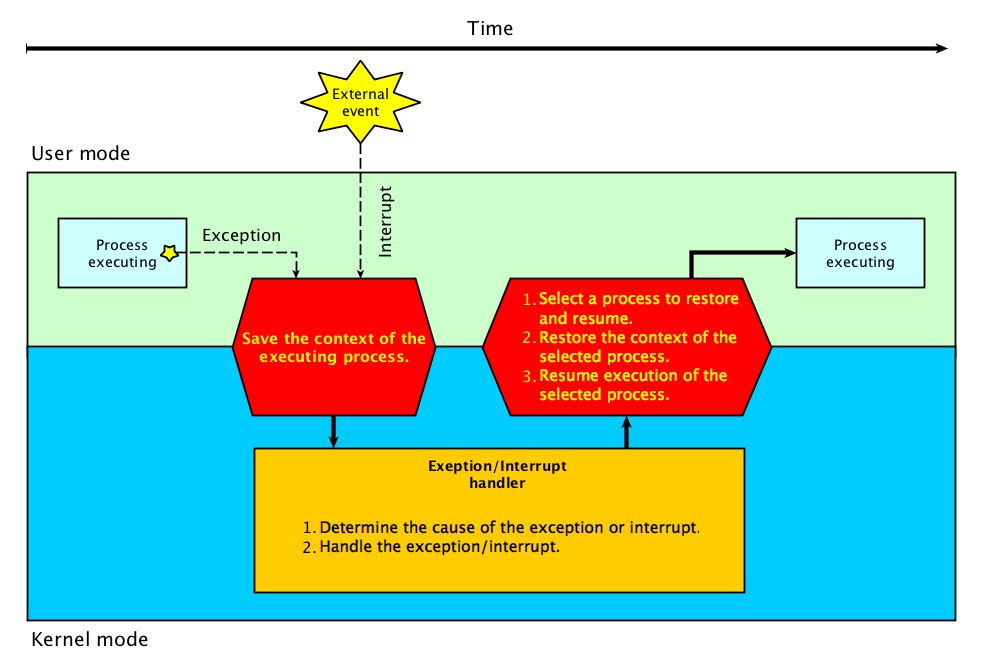
1. overview
-
是什么?
 unexpected condition;
unexpected condition; -
how?
1 2 3 4 5if unexpected condition: save and stop current process enter kernel; call handler restore and resume pre procss -
为什么需要中断? 读外部数据的时候,不确定什么时候数据到达;cpu也不能一直在那边等待着; 需要一种机制, 通知cpu数据已经到达,需要他去处理;
- 网卡:
- 磁盘
- 键盘/鼠标;
-
vs excpetion;
- interrupt: cause By hardware;
- exception: cause by cpu,software
-
exception:
cause by cpu
- trap
- fault
- abort
4.system call
一些资源是所有进程都可能会用到的,为了合理分配这些有限资源,内核不愿意让进程执直接操作这些资源,而是通过一组接口让进程去调用; 这写资源包括:
- 网络
- 文件
- 硬件
- 进程/线程;
- create/terminate 1. load/excute 2. get process attribute
2. 调用过程;
- 进入内核态:trap;
- context switch
5. schedule
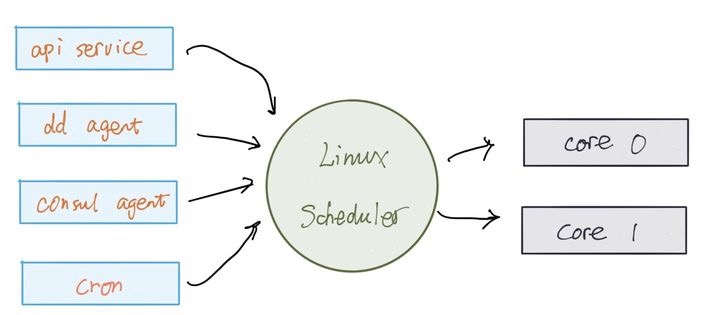
what?
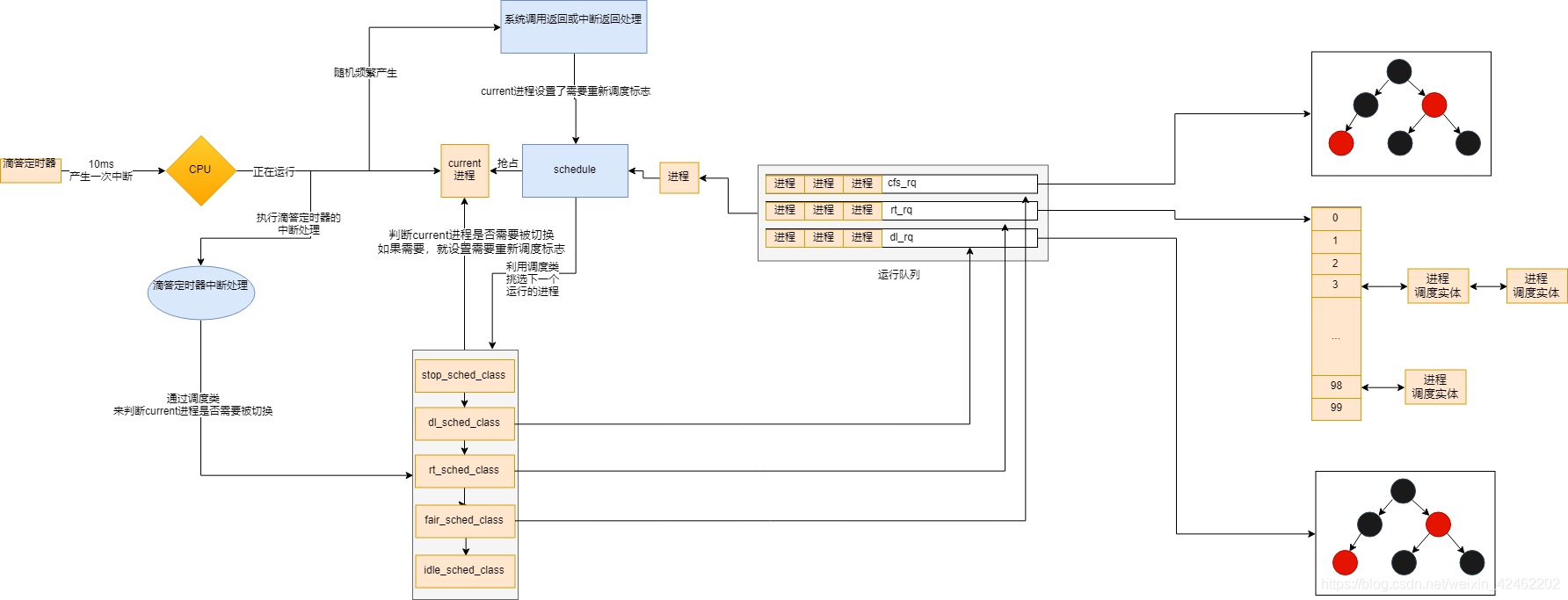
-
what?
- selectNextTask;
- context_switch;
-
只会在i/o等待的时候放生调度; 任何程序的执行过程,大体归为两类;
-
i/o;
-
计算;
如果在执行计算任务时候把他调度出去,那代价非常大,现场不好还原,不会这么做;
algorithm
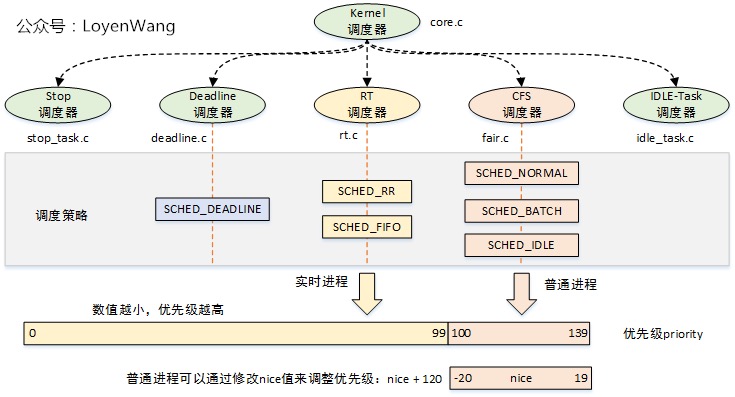
linux 根据不同任务类型;采用不同的调度方法;
- 实时进程:
- 普通进程: CFS
- 交互式进程: shell,文本编辑器;
调度时机
调用schedule;所有调度都在内核态;
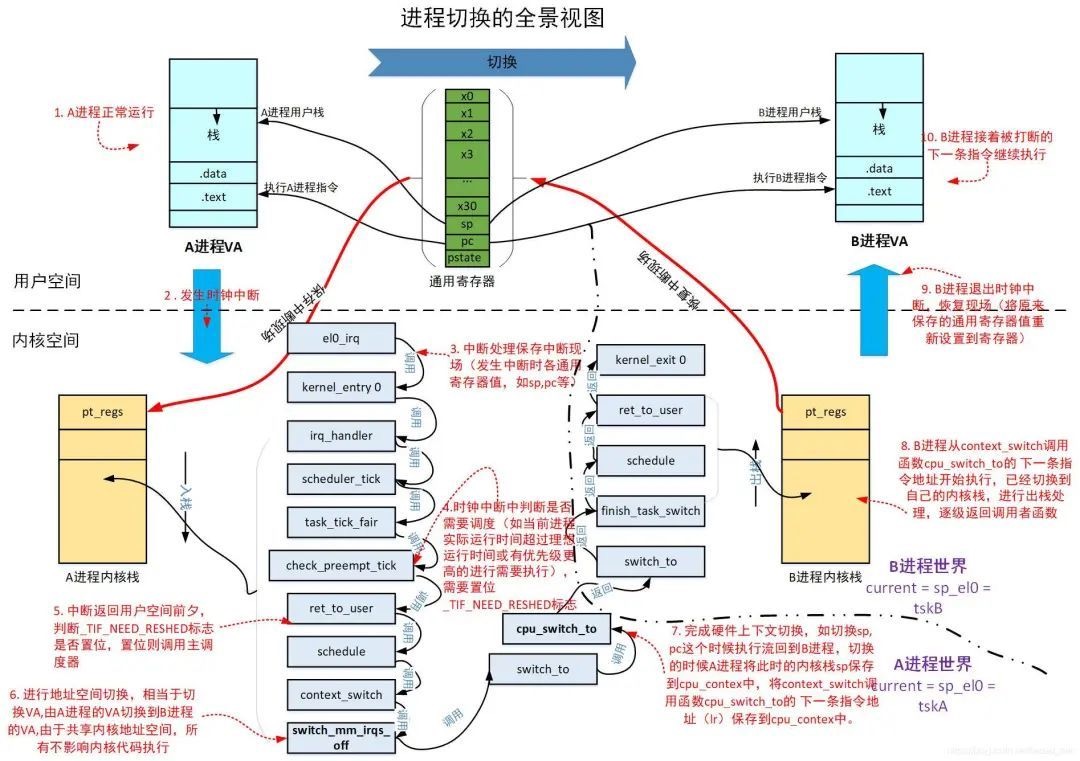
主动(voluntary)
-
需要等待时间发生后才可以继续执行下去,此时需要暂时让出CPU;
-
事件:
- i/o
- 定时器;
-
过程
- set CurrentThred to waiting(sleep) state;
- schedule()
|
|
preemption(unvoluntary)
线程仍可以继续执行下去,但被迫让出cpu,此时线程处于running状态
原因:
- 时间片用完;
- 被高优先级任务抢占
how:
-
set_tsk_need_resched;
-
schedule;
-
types;
-
user preemption: 发生在用户态;
- When returning to user-space from a system call
- When returning to user-space from an interrupt handler
-
kernel preemption: 发生在内核态;
- interrupt to kernel
- 开启抢占;
-
thread model
user thread:
- user-level lib 管理的(创建, 允许,销毁), 程序可以直接创建
- 包含: 用户代码, 用户栈
- cpu 调度: 无法直接被调度, 通过关联kernel thread 被调度
- 如何表示:
- in POSIX, thread_id,内核线程的标识符(句柄)
- 在 go中, 有专门的 结构表示
|
|
kernel thread:
- kernel lib 管理的, 程序无法创建 , os 自行创建
- 可以被cpu 调度
- 如何表示:
|
|
1:1 model: n:1 model:
m: n model: what: 多个用户线程复用一个内核线程 pros:
- 低开销:
- 创建线程开销: systemcall, kernel stack;
- 线程切换的开销
- 高拓展性: 可以创建更多的线程来处理任务
concurrency model
分类标准:
- 如何通信/同步数据
share state:
- 共享状态
- 通过共享状态通信
 example: thread
pros:
example: thread
pros: - 更容易编程/实现 cons:
- 更多并发问题: data race and deadlock
seperate state:
- 独享状态
- 通过通信传递数据;
 example: actor(eerlang, scale ), csp
example: actor(eerlang, scale ), csp
pros:
- 较少并发的问题: data-race, deadlock cons:
- 实现起来更复杂:需要将任务抽象成多个子任务,再通过channel 串联起来
don’t communitcate by share memory , share memory by communicating:
不要通过共享方式进行通信;而是使用通道的方式进行通信;
how to do in csp
csp:
- 任务拆分多个worker组成;
- 数据隔离: 每个g 只读取内部的数据 ;
- 通过channnel 进行通信;
tips:
- go routinue 一般 只读写内部数据(包含参数);并通过channel 对外传输数据
- sub task type:
- producer: 并发获取数据
- consumer : 如果涉及到数据合并,不能并发
csp model:
- 1-chan->1:常见
- n-chan->1:最常见
- 1-chan->n: pool
- m-chan->n(m>n): 不常见
example: bank account
- 拆分任务:
- 获取需要改变的类型和数据
- 写入balance
|
|
example search: n->1, n->1
|
|
pitfall
goroutine leak
leak: 已经使用完的资源未被回收 goroutine leak: 已使用完的goroutine…..
when:
- 未关闭channel 导致消费端阻塞
- in 1->1,消费端提前退出,导致生产端阻塞
how:
thread safe;
why: 多线程同时修改统一变量,读写非原子性导致另一个线程数据被覆盖;
a=100 a thread: a=a+1; a=100; a=100+1 101; b thread: a=a+2; a=100; ……….. a=100+2 102;
a thread updating is overwrite by thread b;
model
data=100; data+1 =101; data+2 = 103;
-
block; a thread locked(block); then wakeup other thread;;
-
produce and consumer; Ga get 1, send to Gc: data=data+1=101; Gb get 2, send to Gc: data=data+2=103;
{a,b | a,b∈ producer} get change, then send to c; {c | c∈ consumer } update value;
-
immutabel: 禁止修改原来变量(没有修改就没有安全问题), 需要新创建新变量来记录修改后变化;
thread A: data1 = newData(data,1); thread B: data2 = newData(data1,2);
问题: 多线程之间如何共享修改的值
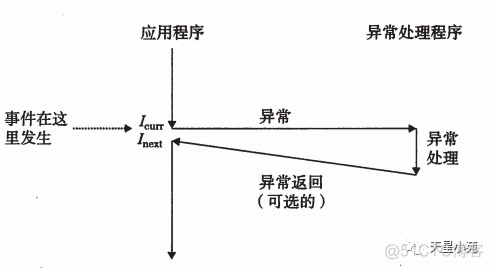 unexpected condition;
unexpected condition;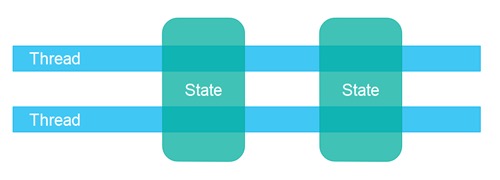 example: thread
pros:
example: thread
pros: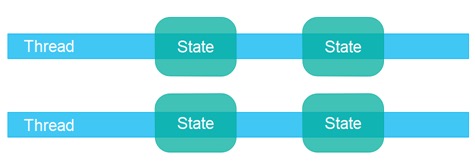 example: actor(eerlang, scale ), csp
example: actor(eerlang, scale ), csp